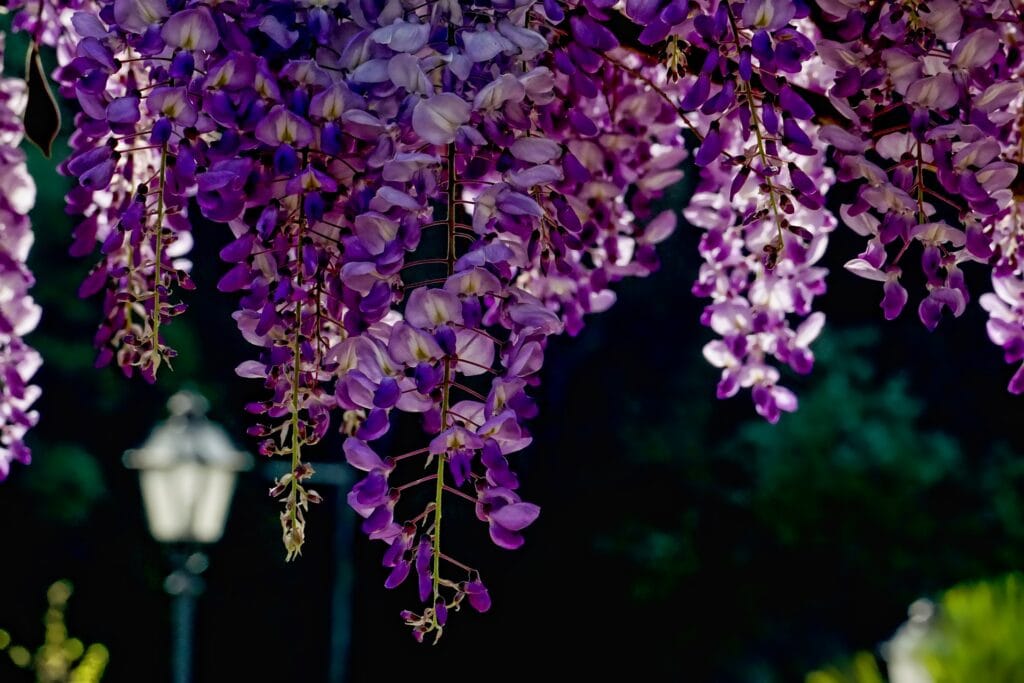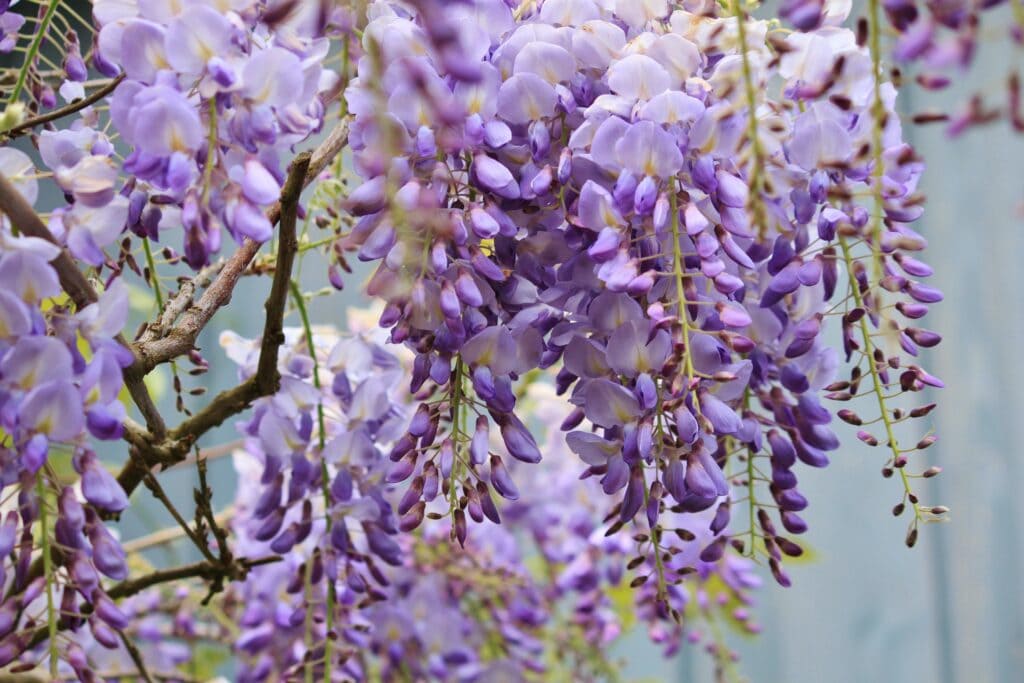How Fast Do Wisterias Grow? & How to Boost Growth & Bloom Rate
-

- Last updated:

Wisteria is a popular indoor houseplant because of its spectacular blooms and beautiful fragrances. Their beauty is majestic, especially when hanging from fences, patios, archways, or pergolas during spring and early summer. It is a fast and aggressive grower, with vines capable of reaching over 30 feet long. Generally, wisteria grows about 10 feet every year, especially when given the optimum growing conditions and proper care.
This article will discuss the growth rate of the wisteria plant and everything required to successfully grow it in your home. Read on to learn more.
The Wisteria Growth Rate
Since wisteria can grow quite long, the vines tend to be heavy and the stems woody. Also, if left to its own devices, it can grow into any nook and cranny it can reach.
The most known variations of wisteria plants are Chinese Wisteria and Japanese Wisteria.
- The Japanese Wisteria, also known as Wisteria floribunda, is recognizable from fragrant violet flowers that appear in 8- to 20-inch clusters.
- The Chinese Wisteria, also known as Wisteria sinensis, grows a little shorter at 12 inches long. However, its blooms tend to be large but not as fragrant as the Japanese cultivar.
As earlier mentioned, this plant is an aggressive grower and can be very invasive in some areas. The twining vines can get very heavy, so they require sturdy support to keep up with the fast growth rate.
Wisteria Growing Conditions

The Wisteria thrives in the USDA hardiness zone from 4 through 9. However, this depends on the specific variety. It can often tolerate alkaline soil conditions. The soil should be moist, deep, and well-draining.
Most gardeners are attracted by this houseplant because of the aesthetic appeal of its blooms. This is probably why they get frustrated by the plant’s tendency to produce only vegetation and delayed blooms.
This plant only blooms when there is new growth and at a certain level of maturity. The Asian wisteria varieties can go for up to 15 years without producing a single bloom. Late blooming can be attributed to poor-quality plants, immaturity, insufficient phosphorus and nitrogen, or too much shade.
How to Boost Your Wisteria’s Growth and Bloom Rate
As earlier mentioned, gardeners are usually interested in this plant species because of its majestic blooms. However, they are often frustrated at how long it takes for the plant to reach maturity. If you are growing a young wisteria plant, you must be patient.
It can take several years before the plant starts producing flowers. The growth and blooming rate of the wisteria plant depend on several environmental and care factors.
Here are a few tips to help guarantee faster growth and blooming of your wisteria plant:
- Do not plant a wisteria plant propagated from the seeds. Plants grown from seeds tend to remain in their juvenile form for several years (up to 15 years) before producing their first bloom. Instead, opt for a wisteria variety that is propagated from a well-documented bloomer.
- One of the common reasons the wisteria plant fails to bloom is exposure to a cold environment. If you want to grow the plant in a cold, rainy area, the wisteria should be protected from the elements. Since the plant is highly sensitive to frostbite, consider purchasing Kentucky or the American Wisteria species to minimize the risk of damage to the vines. These varieties tend to bloom with the current growth of the season.
- Do not overwater your established wisteria vines. Usually, the plant has to undergo stressful growing conditions to force the flowers to bud. If you provide too much water for your plant, it will end up producing more leaves at the expense of flowers.
- The wisteria needs optimum exposure to sunlight to thrive. Therefore, a plant grown in direct sunlight is more likely to grow and bloom faster than one growing in a shaded area. For healthy development, give your plant at least 6 hours of sunlight exposure every day.
- Like many legumes, the wisteria plant can thrive without a lot of fertilizer. If anything, too much fertilizer could end up delaying or inhibiting blooming. If you feel that your plant could do with a nutritional boost, apply a balanced 10-10-10 fertilizer. This should be done in spring, and the fertilizer should be applied at the rate of ½ a cup per plant. If your plant has reached maturity, you can apply ½ a cup of superphosphate in spring.
- To maintain the wisteria plant, you need to apply pruning techniques. If not regularly pruned, the wisteria plant can grow up to 100 feet in length. Landscaping experts recommend you prune your wisteria plant in midsummer, ensuring that you cut the vines back to 6 inches long. This should also be done in winter. Immediately after the plant starts flowering, prune the vines after the bloom begins to fade and repeat the same process in late winter.
- The Wisteria plant is not fussy about the soil PH level. However, the soil should be moist and well-draining. You can get this balance by using peat moss or compost. To help conserve moisture content in the soil, consider adding a 3-inch layer of wood chippings.
- As earlier mentioned, the wisteria vines can become quite heavy if left to grow naturally. Therefore, they need a strong arbor to support the fast growth rate. If you use weak commercial trellises, your plant will probably topple from the weight.
Conclusion
The Wisteria plant can add to the aesthetic appeal of your compound, especially at full bloom. It is an aggressive-growing plant that usually grows about 10 feet every year with the right care and ideal growing conditions. So, you need to ensure that your plant is growing where there is enough room for the vines to spread.
If you plan to grow the wisteria, ensure that the soil is deep, moist, and well-draining. Since wisteria is a very invasive species, you need to carry out regular pruning to reduce the weight of the vines. Also, provide the plant with a sturdy trellis to support the vines.
Featured Image Credit By: Pixabay
Contents

